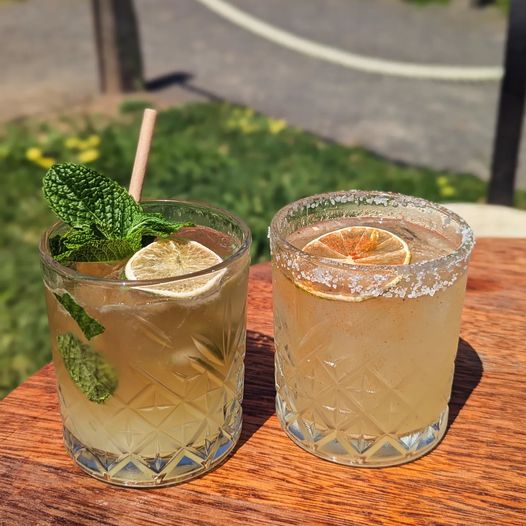The demand for non-alcoholic spirits has been on the rise as more people seek healthier lifestyles and alternatives to traditional alcoholic beverages. For breweries, distilleries, and aspiring entrepreneurs, venturing into this market is an excellent way to diversify product offerings. Here we are happy to discuss with you through the process of making non-alcoholic spirits using a traditional pot still, exploring how your existing equipment can be adapted to meet new market demands.

1. What Are Non-Alcoholic Spirits?
Non-alcoholic spirits are beverages that mimic the flavor, aroma, and complexity of traditional spirits like whiskey, gin, vodka, or rum but contain little to no alcohol (less than 0.5% ABV). These products rely on botanical extracts, herbs, spices, and other natural ingredients to create a similar sensory experience without the effects of alcohol.2. Why Use a Traditional Pot Still for Non-Alcoholic Spirits?
A traditional pot still is designed for distillation, typically separating alcohol from a mixture through evaporation and condensation. While it is commonly associated with alcoholic spirit production, its versatility makes it ideal for extracting flavors from botanicals, herbs, and spices for non-alcoholic alternatives.Advantages of using a pot still:
·Efficient extraction of natural flavors and essential oils.
·Control over temperature and distillation speed for precise flavor profiles.
·Familiarity for distilleries already experienced with the equipment.
3. The Production Process
Here is a step-by-step guide to making non-alcoholic spirits with a traditional pot still.Step 1: Preparing the Ingredients
The base ingredients determine the flavor profile of your non-alcoholic spirit.·Botanical: Choose herbs, spices, and fruits depending on the type of spirit you aim to replicate. For example:
--Gin: Juniper berries, coriander seeds, citrus peels, and angelica root.
--Whiskey: Oak chips, vanilla pods, and caramelized sugar for depth and smokiness.
--Rum: Molasses, cinnamon, and tropical spices like nutmeg and allspice.
·Base Liquid: Use water or a combination of water and vegetable glycerin for a smooth texture.
Step 2: Setting Up the Pot Still
Prepare your traditional pot still for flavor extraction:--Fill the pot with your base liquid.
--Place the botanicals in the pot or in a dedicated botanical basket if your still has one.
--Ensure all connections are sealed properly to prevent flavor loss.
Step 3: Distillation
Low-Temperature Distillation:--Heat the pot slowly to prevent burning delicate ingredients.
--Maintain a temperature below 100°C to avoid producing alcohol. This ensures only the flavors and essential oils are extracted.
Collecting the Distillate:
--The condensed liquid from the distillation process is your flavor concentrate.
--Discard the first few milliliters ("heads") as they may have an overly strong or bitter taste.
Step 4: Flavor Balancing
Once you’ve collected the flavor-rich distillate, adjust the flavor balance:**Dilution: Mix the concentrate with water to achieve the desired intensity.
**Sweetening (Optional): Add small amounts of sugar or glycerin for a rounded mouthfeel.
**Acidity: Use citric acid or apple cider vinegar to enhance brightness.
Step 5: Filtration and Clarification
Filter the final product to remove any residual solids or impurities:--Use a fine mesh filter or a plate filter for clarity.
--For a crystal-clear product, consider cold filtration to remove microscopic particles.
Step 6: Bottling
**Bottle the non-alcoholic spirit in sterilized containers.**Ensure proper labeling with “non-alcoholic” prominently displayed to meet regulatory requirements.
4. Tips for Enhancing Product Quality
**Experiment with Botanical: Test different combinations to create unique flavors that stand out in the market.**Focus on Mouthfeel: Non-alcoholic spirits lack the natural viscosity of alcohol, so consider adding ingredients like glycerin for a satisfying texture.
**Consistency: Use precise measurements and process controls to maintain flavor consistency across batches.
5. Challenges and How to Overcome Them
**Flavor Concentration: Non-alcoholic spirits often need bolder flavors to mimic their alcoholic counterparts. Adjust your recipe to ensure the flavors are strong enough.**Preservation: Without alcohol, the product may be more prone to spoilage. Use pasteurization or natural preservatives to extend shelf life.
**Consumer Education: Educate your customers on the uses of non-alcoholic spirits, such as mixing them in cocktails or drinking them neat.
6. Market Potential for Non-Alcoholic Spirits
The global market for non-alcoholic spirits is growing rapidly, driven by trends such as the rise of the “sober curious” movement and increasing health awareness. By adding non-alcoholic options to your product line, you can:--Attract a broader audience, including non-drinkers and health-conscious consumers.
--Differentiate your brand in a competitive industry.
--Expand into new distribution channels, such as health food stores and online marketplaces.
7. How Tiantai Can Help You Get Started
At Tiantai, we specialize in providing brewing and distilling equipment tailored to your needs. Whether you’re setting up a new line of non-alcoholic spirits or adapting your existing setup, we offer:***Traditional Pot Stills: High-quality copper or stainless-steel stills for precise flavor extraction.
***Mixing and Filtration Systems: Essential for achieving the perfect balance and clarity in your product.
***Customizable Solutions: Equipment designed to grow with your production capacity.
Making non-alcoholic spirits with a traditional pot still is an innovative way to enter a booming market while leveraging your existing expertise and equipment. By focusing on quality ingredients, precise distillation, and thoughtful flavor balancing, you can create products that delight your customers and open new business opportunities.
If you’re ready to start your journey into non-alcoholic spirits, Tiantai is here to support you every step of the way. Contact us today to discuss your equipment needs and take the first step toward expanding your product range!
Edited by Cassie
E-mail:[email protected]


.jpg)





Get A Quote